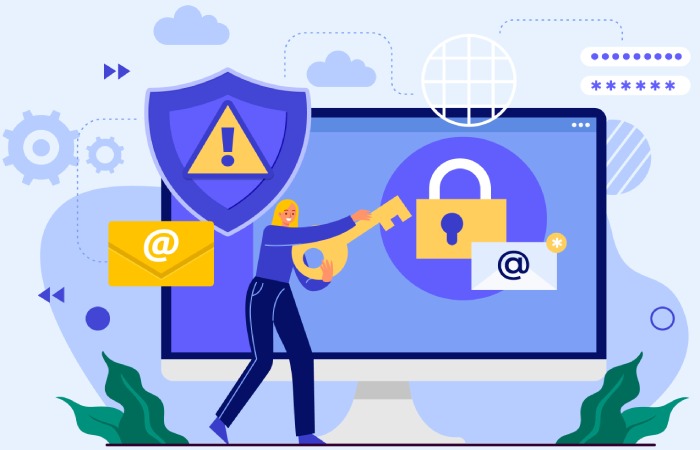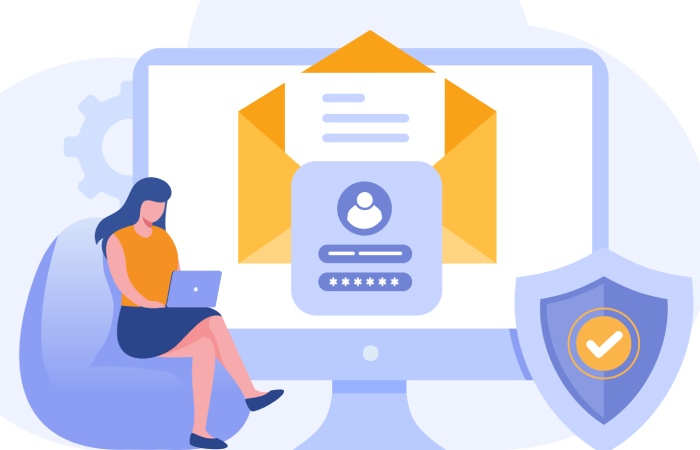Malicious actors still prefer to apply social engineering strategies in messages to steal critical information such as passwords and financial details and make people perform tasks such as completing a wire transfer to their account or downloading malware. All such incidents ultimately jeopardize the confidentiality, integrity, and availability of any organization’s crucial information assets. Hence it calls for serious attention to email security and email continuity.
Some Alarming Statistics And Facts
Malicious actors often invent sophisticated methods to get through various cybersecurity strategies of organizations. Here are some alarming phishing statistics and facts.
- APWG’s Phishing Activity Trends Report for Q2 2020 shows that the first half of 2020 witnessed 146,994 phishing attacks.
- Though credential phishing has reduced, there is an increase in the number of BEC (Business Email Compromise) cases.
- Smaller organizations and startup entities witness a higher number of malicious emails.
- As per Verizon’s 2020 Data Breach Investigation Report, the maximum number of data breaches occurs through phishing.
It drives home the fact that small businesses and startup enterprises must take serious note of email security.
What Is Email Security?
In simple terms, email security constitutes a set of procedures and tools for protecting email accounts, email contents, and other communication against unauthorized access, loss, or compromise. It is essential because email is the primary medium that malicious actors use to spread malware, phishing attacks, and spam.
Why Must SMEs Consider Email Security?
Besides protecting unauthorized access to a user’s email accounts and their contents, email security covers various areas.
- Protects the business from phishing attacks
- Prevents incidents of spoofing
- Takes care of malware and ransomware
- Discourage MITM (Man in the Middle) or BEC attacks
- Protects against social engineering attacks
The malicious activities listed above can prove spine-breaking to business entities. Small businesses or startup enterprises usually do not have the necessary cybersecurity strategies in place and are highly vulnerable. It’s high time they paid adequate attention to email security.
Email Continuity For Uninterrupted Communication
Email continuity is a concept that must go hand-in-hand with email security. In the event of the exchange server crashing due to a fault or cyberattack, including DDOS, it becomes significant to have an alternate service to ensure uninterrupted email communication.
A simple example is that of Microsoft 365 Exchange Online that offers 99.99% SLA. It indicates that there might be a minimum of an hour’s downtime at some point during the year. Thus, email continuity is a backup mail service that allows businesses to continue functioning as usual.
How Email Continuity Helps When The Server Is Down?
Whenever the standard email client goes offline or crashes, email continuity helps switch all email clients to send and receive emails through an alternative platform. It allows the IT administrators to work on the outage and rectify matters without being overwhelmed by helpdesk calls.
The advantage is that clients will have access to their email and calendar information all the time. Once the email server is back online, the email continuity service automatically reconnects and synchronizes every email sent and received during the outage. Business enterprises must have email continuity to avail the following benefits.
- Ability to access emails via any web browser when the regular email client is unavailable
- Access both historical and live email using a familiar interface
- Sustain user productivity
- Reduce the complexity of email infrastructure
Though the email continuity concept ensures that employees and clients access their emails without interruption, it becomes necessary to have the right mail backup solution in place to accomplish it. An effective Backup MX (Backup Mail Exchange) provides seamless continuity of email communication in the event of disruption of the primary email server.
Backup MX In Email Continuity
Backup MX is an SMTP server that springs into action when the primary SMTP server goes offline. It thus helps maintain email continuity. Whenever an email is sent to a recipient, the email server uses the DNS MX records to search for the server that handles the domain’s emails. These MX records have a priority of order, the convention being the highest priority is offered to the server with the lowest number.
Generally, the primary email server is given the lowest priority so that when it becomes unavailable, the delivery is attempted to the next mail server on the MX list. Businesses should configure their Backup MX server to assign an MX record of lesser priority to the primary email server. It ensures the delivery of the emails to the backup SMTP server.
Outbound SMTP
Just as SMEs have to worry about email security, email continuity, and Backup MX, they should also be concerned about outbound SMTP. It can send emails from any device that can connect to an SMTP server and authenticate it with a username/password. The best part is that it allows businesses to send emails even when the mail server is on the blacklist or RBL (Real-time Blackhole List.)
Final Words
With cyber threats looming large over the industry, it is imperative for all business entities, especially startups and small businesses, to have specific email security solutions in place. It can protect email accounts from unauthorized access and help in safeguarding the organization’s data and reputation. Email continuity must also be considered for continuous access to communication even when the server is down.


